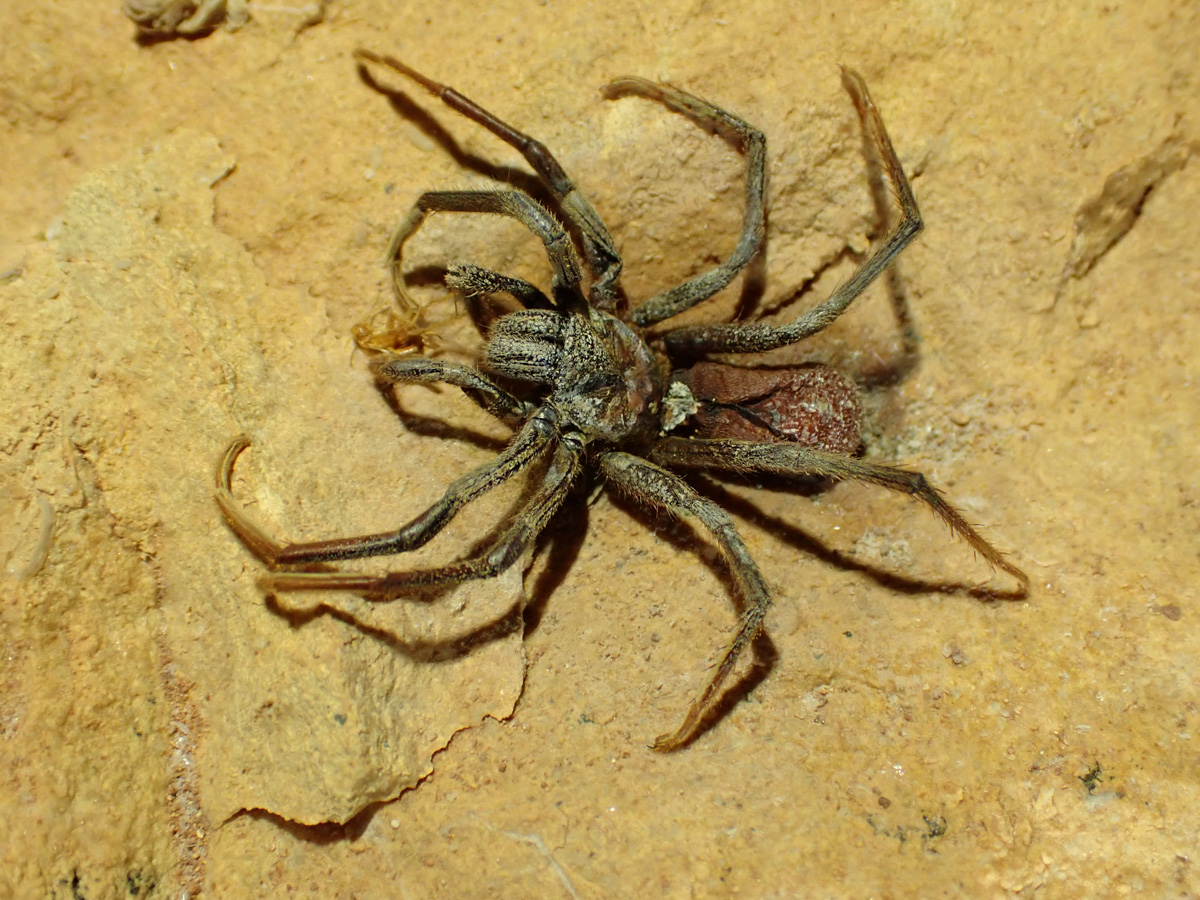A team of researchers, together with cavers in Australia, have crawled their way quite literally into a treasure trove of new invertebrate species. Many of the new-to-science species, which include spiders, cockroaches, centipedes, and even a wasp, exhibit cave adaptations such as eyelessness and were found mummified and perfectly preserved within the Nullarbor cave system.
“I’d heard from cavers that this cave contained a lot of mummified invertebrate specimens, but I wasn’t prepared for the sheer diversity and number of them, and that all of the ones I examined were eyeless,” Dr Jess Marsh from the University of Adelaide told IFLScience.
Curiously, some appeared to have died mid-way through climbing up the walls, “frozen in action”.
Among the preserved invertebrates is what appears to be the first known cave-adapted species of wasp, with greatly reduced wings and non-functional eyes, a product of living in such a specific environment.
I had a feeling when I saw it that this was something really special. It is the only known cave-adapted wasp in the world.
Dr Jess Marsh
“The one that stands out most was the wasp. I was around 1.5 km into the cave, crawling through a passage, when I noticed a different-looking insect on a rock. It was a wasp, with really small wings, long legs, long antennae, and no eyes. I had a feeling when I saw it that this was something really special. It is the only known cave-adapted wasp in the world,” continued Dr Marsh.
“What made it even more exciting was that it is in a family called the spider wasps (Pompillidae), which specialise in parasitising spiders. All of the spiders in the cave were also highly cave-adapted (eyeless), and that story of two separate species, linked through parasitism, co-evolving into a cave-adapted life form is just so fascinating.”
While all of the initial species were mummified and preserved by the dry, salty conditions within the cave, surveys of further caves also contained a living population of what is thought to be a new species of cave-adapted spider. These pale spiders are slow-moving and build very large webs. It’s possible this newspecies only exists in this one cave in Australia.

A dead eyeless female spider from the genus Troglodiplura with its prey.
Image Credit: Steve Milner
At the moment, the cause of the mummification and the ages of the species are currently unknown. The team plans to send some of the specimens for radiocarbon dating to work out how old they are. As for the cause of the event that killed everything, the researchers have some theories.
“The fact that many of the invertebrates seem to be ‘frozen’ in action, suggests the potential for a gas event, or events, which killed them in situ,” Dr Marsh told IFLScience. “If we are able to obtain a date on how old the specimens are, and whether they represent a cumulation of specimens over a long period of time (as would be expected in a ‘typical’ system), or whether they are all from the same age (which would suggest an event), then that will provide some important clues.”
The wider area of the Nullarbor Plain is an almost treeless arid plain located on the Southern side of Australia. However, it is also home to the largest contiguous arid limestone karst (cave) region in the world. Many of the caves have not undergone surveys and may contain even more unknown species.
“To prevent extinctions, it is essential that we better understand and value the life in these caves,” Dr Marsh concluded.
Source Link: “I Wasn’t Prepared For The Sheer Number Of Them”: Cave Of Mummified Never-Before-Seen Eyeless Invertebrates Amazes Scientists